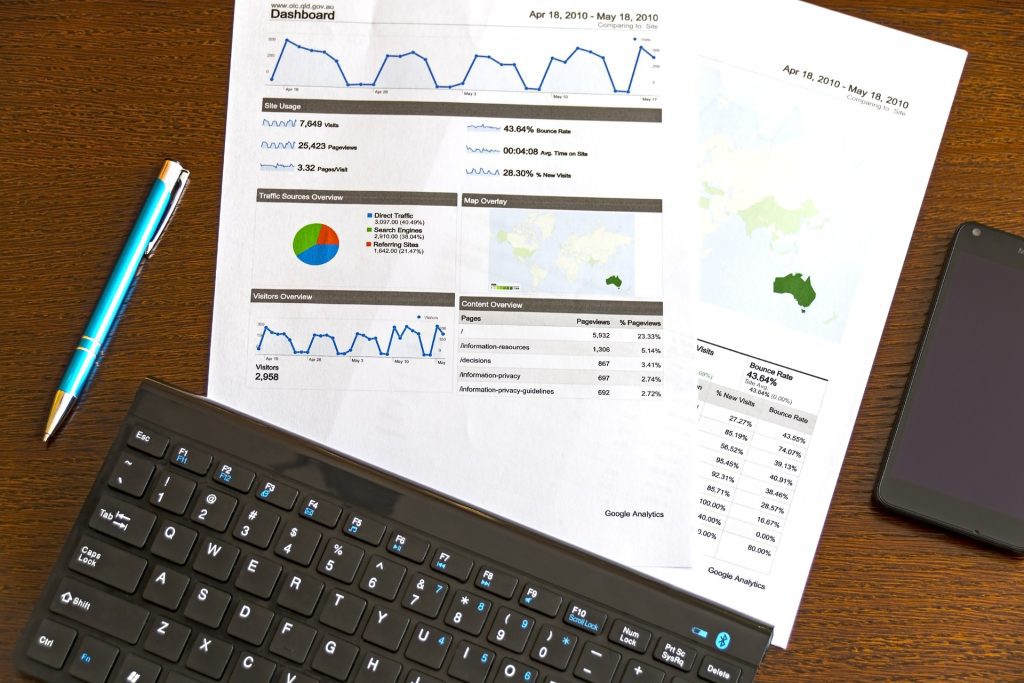In today’s digital age, businesses rely heavily on their online presence to drive growth and success.
That’s where Google Analytics 4 comes in – a next-generation analytics platform that offers advanced tracking and analysis tools to help businesses gain better insights into their online performance.
In this article, we are going to cover what Google Analytics 4 is and how it can help businesses make more informed decisions and optimize their online strategies for better performance.
let’s get started!
What is Google Analytics 4?
Google Analytics 4 is a next-generation analytics platform that offers advanced tracking and analysis tools to help businesses gain better insights into their online presence.
With capabilities like cross-device monitoring, machine learning-powered insights, and more, it is made to give a more detailed picture of user behavior.
Businesses can make better judgements and manage their online strategy for performance with Google Analytics 4.
In simple words, Google Analytics 4 is a free service that lets you track your website’s traffic and other data.
key Features of Google Analytics
- Real-time data tracking
- Customizable dashboard and reports
- Goal and event tracking
- E-commerce tracking
- Multi-channel funnel analysis
- Advanced segmentation and filtering
- Demographic and interest data
- User flow and behavior tracking
- Mobile app tracking
- Site search analysis
- Custom dimensions and metrics
- Integration with other Google tools and services (such as Google Ads and Data Studio)
Google Analytics 4 Advanced Features
Machine learning-powered insights: This feature uses powerful algorithms to analyze your data and provide actionable insights, such as identifying high-value customers or predicting future user behavior.
Cross-device tracking: With this function, you can monitor user activity on multiple devices, providing you with a more thorough understanding of their journey and behaviour.
Enhanced measurement: To better understand user activity, this feature offers extra monitoring options like scroll tracking, file downloads, and outbound link hits.
Key Differences Between GA 4 and Universal Analytics
| Features | Google Analytics 4 | Universal Analytics |
|---|---|---|
| User-centric approach | Yes, focuses on the user journey | No, focuses more on sessions and pageviews |
| Event-driven data model | Yes, tracks every user interaction as an event | No, tracks data based on pageviews and sessions |
| Machine learning and AI capabilities | Yes, provides advanced insights and recommendations | Limited AI capabilities |
| Simplified implementation | Yes, simpler setup and more flexible data collection | No, requires more setup and data management |
| Data retroactively | Limited ability to retroactively apply data to new features | Yes, more flexibility in retroactively applying data |
Overall, Google Analytics 4 offers a more user-centric and event-driven approach to tracking and analyzing data, with advanced machine learning and Artificial intelligence capabilities.
GA 4 is different from Universal Analytics because it uses cookies to store information about user’s activities on your site. This means that you can use GA 4 for both mobile apps and websites–a feature that wasn’t available in its predecessor, Universal Analytics.
How to Set Up Google Analytics 4?
Follow these steps to set up GA4:
- Log in to your existing Google Analytics account or make a new one
- Go to the Admin section of your account.
- Under the Property column, select “Create Property”
- Choose “Web” as your platform type and enter your website’s name and URL.
- Select your industry category and time zone.
- Turn on the “Create a Universal Analytics property” toggle switch.
- Click “Show Advanced Options” and turn on the “Enable Google Analytics 4” toggle switch.
- Click “Next” and follow the prompts to complete the setup process.
- Copy the global site tag and Google Analytics version 4 measurement ID provided by Google.
- Paste the tags onto your website’s header section.
- Wait for data to populate in your Google Analytics 4 dashboard, which may take up to 24 hours.
Note that you may need to adjust your website’s tracking code or use a plugin to ensure that Google Analytics 4 is properly implemented.
Additionally, you may want to customize your tracking settings and goals in your Google Analytics 4 account for more accurate data tracking and analysis.
To do this, follow these steps:
- Use filters to exclude unwanted data from reports.
- Set up segments to analyze specific data.
Integrating Google Analytics 4 with Other Platforms
Integrating with Google Ads
You can integrate your Google Analytics 4 account with your Google Ads account to see how well your ads are performing.
This will allow you to track conversions that happen after someone clicks on one of your ads, and it also allows you to see the cost per acquisition (CPA) of each individual campaign.
Integrating with Google Tag Manager
If you’re using Google Tag Manager to manage all of the tags on your website, then this integration will make it easy for them both to work together seamlessly.
Since GTM is so popular among marketers these days, we think this feature is worth mentioning here as well!
Best Practices for Using GA 4
Set up goals
Goals are a great way to track the success of your website, and they’re easy to set up.
You can create one goal for each conversion you want to track–for example, if you want to track how many people purchase something from your store or sign up for a newsletter, go ahead and create two separate goals for those actions.
Set up events (and custom dimensions)
Tracking user behavior on your site can be done through events.
Events help determine if certain pages are performing well or poorly in engaging visitors who arrive from sources such as social media or Google’s AdWords platform.
Having a system in place to track users who leave a page and return later can help you understand what happens during those first few seconds after landing on a URL. This is especially important for mobile users who may accidentally click away from a page they were reading.
You can use Custom Dimensions to collect this data.
On the whole
GA 4 is a powerful tool that can provide valuable insights into your website’s performance and help you make data-driven decisions to drive business growth.
You can enhance your online strategies and boost the functionality of your website by understanding your audience, monitoring user activity, and data analysis.
Google Analytics 4 is an essential tool for any company trying to prosper in the digital era because of its cutting-edge features and integrations.

My name is Harshil and I am a passionate writer, with a love for exploring new ideas and sharing them with the world.
I started this blog as a way to express my thoughts and share my ideas with a wider audience. My goal is to use my writing to connect with people, inspire new perspectives, and create a community of like-minded individuals who are passionate about learning and growth.
Whether I’m writing about Technology, personal development, or just sharing my thoughts on the world around us, I believe that words have the power to change the way we see things and make a positive impact on our lives.
So, come join me on this journey, and let’s see where our imaginations can take us!”



